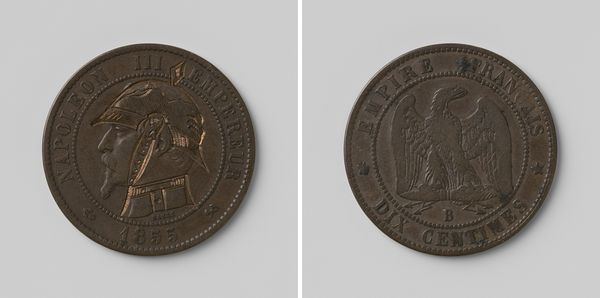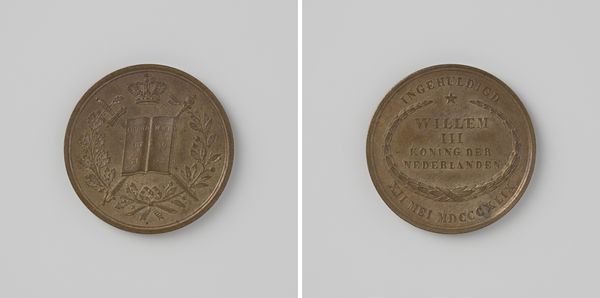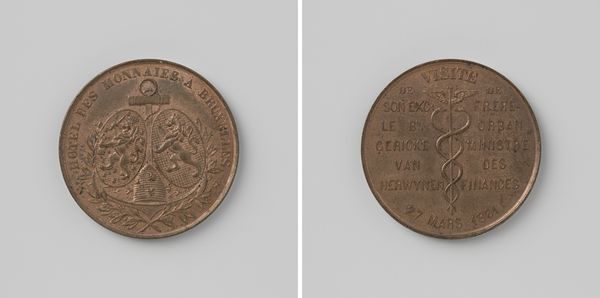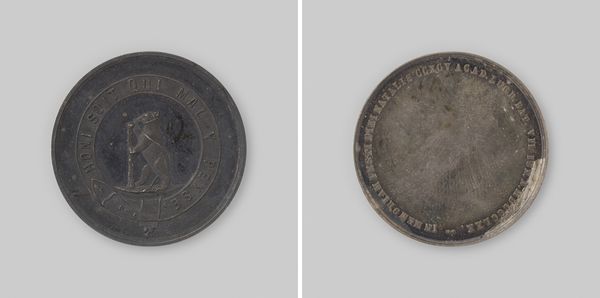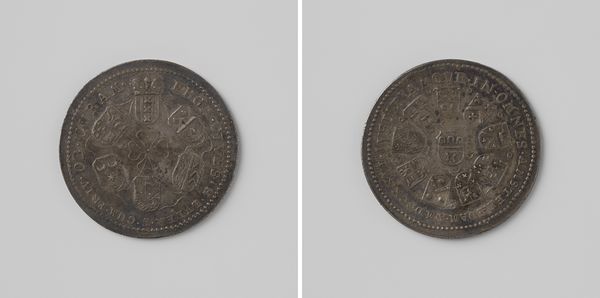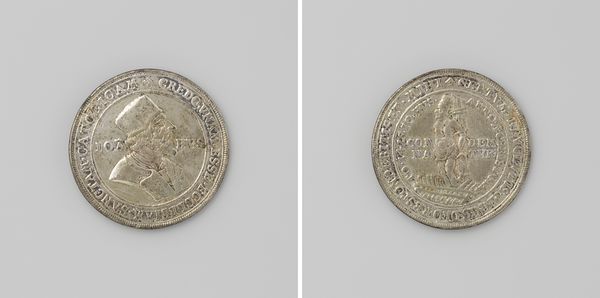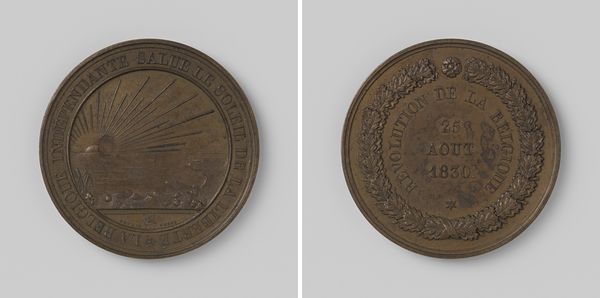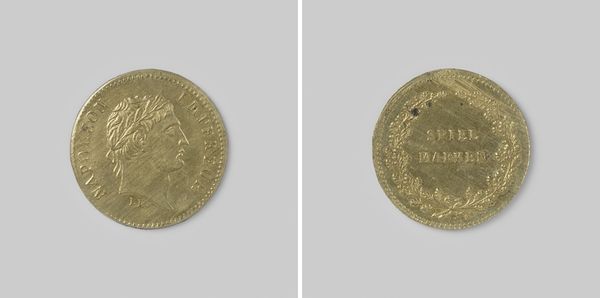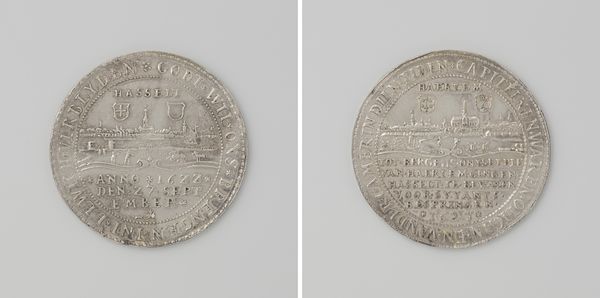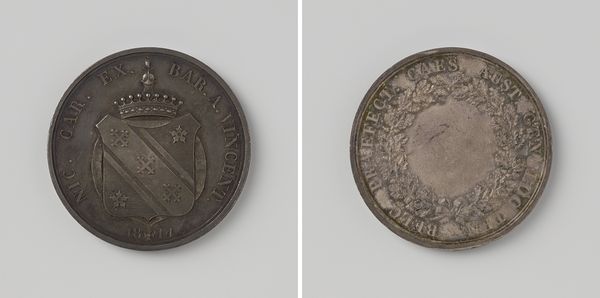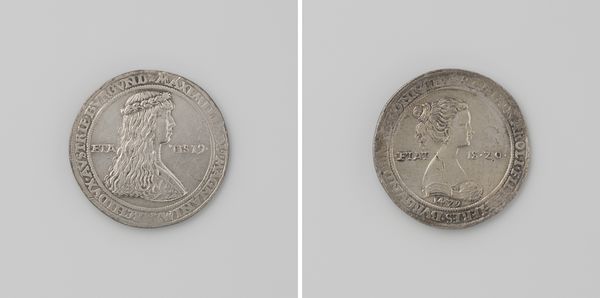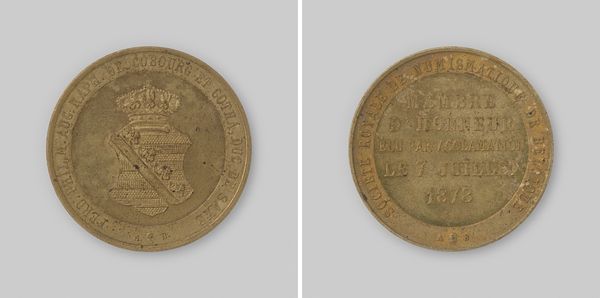
Bezoek van het eerste Japanse gezantschap aan ´s Rijks Munt te Utrecht 1862, met muntteken 1862
0:00
0:00
print, metal
# print
#
metal
#
asian-art
#
geometric
#
history-painting
#
miniature
Dimensions: diameter 3.8 cm, weight 22.42 gr
Copyright: Rijks Museum: Open Domain
Curator: Here we have an intriguing metal print from 1862, crafted to commemorate the visit of the first Japanese embassy to 's Rijks Mint in Utrecht. It is titled "Bezoek van het eerste Japanse gezantschap aan 's Rijks Munt te Utrecht 1862, met muntteken". Editor: My initial reaction is one of formal diplomacy and power. The symmetry, the carefully inscribed text... it speaks of meticulously planned interactions between nations. Curator: Indeed. The coin’s design neatly partitions Dutch and Japanese symbolism. On one side, you see the Dutch coat of arms paired with the date "1609", marking the beginning of trade relations. Flanking it is text in both Dutch and Japanese which reads "NIPPON TAI-KOEN-NO SEI-BI HOLLANDA NI KIMAROE", indicating both the Kingdom of The Netherlands and Japan. Editor: And what about the other face of this coin? What does that iconography communicate? Curator: It displays four rows of stylized non-Latin script within a circle, surrounded by the words "ONDER DE REGEERING VAN WILLEM III, KONING DER NEDERLANDEN". I suspect that the artwork attempts to establish parity. However, the choice of a Western language as a framing device may speak of lingering hierarchical tensions. Editor: I agree. The inscriptions are critical—this coin served as a form of historical documentation and self-validation. We must consider the complex dance between mutual respect and lingering colonialism in such intercultural encounters. This commemorative piece becomes less about the event and more about the perpetuation of political and cultural narratives. Curator: And within those political undercurrents, we find that this coin functions not just as a document, but also as an exquisite display of artistry. The formal presentation allows each side, Dutch and Japanese, to make its individual statement about their relationship and values. It allows the numismatic piece to act as both an example of design and complex historical document. Editor: Perhaps it underscores how history, especially visual history, can be at once performative and persuasive, seeking to define narratives through symbolically weighted designs. It prompts one to think deeply about the unwritten dynamics within such "friendly" exchanges. Curator: Very true; it appears simple at first glance, but the composition rewards closer investigation, offering many levels of reading. Editor: And it shows how vital it is for institutions to continually reframe our perspectives as more contexts emerge.
Comments
No comments
Be the first to comment and join the conversation on the ultimate creative platform.


